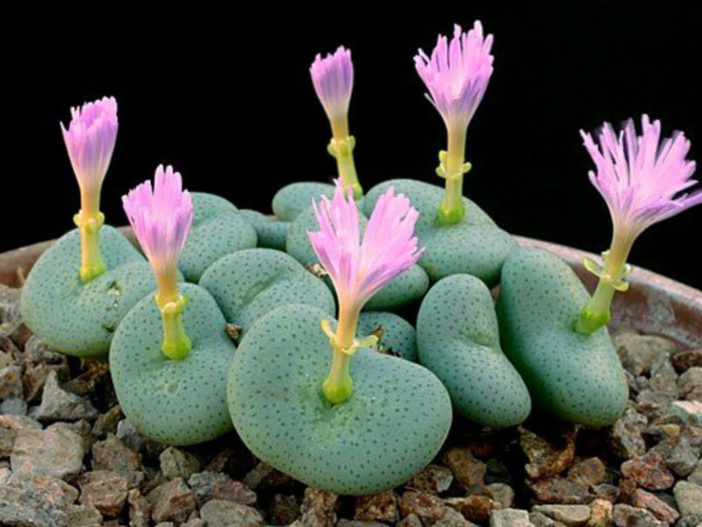Scientific Name
Conophytum wettsteinii (Berger) N.E.Br.
Common Name(s)
Cone Plants, Dumplings, Button Plants
Synonym(s)
Conophytum wettsteinii var. wettsteinii, Mesembryanthemum wettsteinii
Scientific Classification
Family: Aizoaceae
Subfamily: Ruschioideae
Tribe: Ruschieae
Genus: Conophytum
Description
Conophytum wettsteinii is a small succulent that has bodies with a broad top and a narrowed base. The bodies seem circular from above, up to 1 inch (2.5 cm) in diameter, with fissures up to 0.15 inches (0.4 cm) long. They have a smooth, spotted, green to blue-green epidermis.
The flowers are scentless, ranging in color from magenta to pale pink or rarely white. They appear in the fall, opening during the day.

Hardiness
USDA hardiness zones 10a to 11b: from 30 °F (−1.1 °C) to 50 °F (+10 °C).
How to Grow and Care
Most Conophytums need bright light but do not like too much intense sunlight. To avoid sunburn, place them in a position to receive a few hours of full sun in cooler periods of the day.
These plants thrive best in a porous growing medium that will drain quickly. Use a commercial succulent soil specially designed for growing succulents or make your own mix.
When Conophytums go dormant in the spring, they require little or no water. In the fall, when plants will begin growing, it is safe to water deeply, allowing the soil to dry before watering again.
Conophytums are light feeders and do not need fertilizer at all if they are repotted every two years. It is best to feed at the beginning of the growth period and just before flowering.
These succulents will benefit from repotting. They typically need to be repotted every 2 to 4 years, depending on the pot's size and growth rate. The best time to repot a Conophytum is at the beginning of a period of active growth.
Conophytums are easily propagated by division. They can also be grown from seeds.
Learn more at How to Grow and Care for Conophytum.
Origin
This species is native to South Africa.
Links
- Back to genus Conophytum
- Succupedia: Browse succulents by Scientific Name, Common Name, Genus, Family, USDA Hardiness Zone, Origin, or cacti by Genus
Photo Gallery
Click on a photo to see a larger version.



